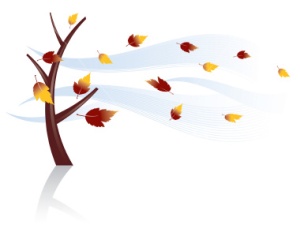L’automne
L’automne au coin du bois,
Joue de l’harmonica.
Quelle joie chez les feuilles !
Elles valsent au bras
Du vent qui les emporte.
On dit qu’elles sont mortes,
Mais personne n’y croit.
L’automne au coin du bois,
Joue de l’harmonica.
Maurice Carême
This beautiful poem I find is lyrical and there is a hidden thread within the words of the music of Autumn.It's a piece of poetry that we can use in target language learning to explore nouns and the imagery of dance and music to create a magical picture of Autumn.
Walk through the nouns
- Share with the children the fact that you are on an Autumn walk and the wind is blowing and the leaves are blowing around.
- Ask the children to read through the poem and find the nouns in the poem and write them down on a rough piece of paper (just like they were collecting Autumn leaves)
- Which nouns in the target language have the children found? How did they do this? What helped them to find the nouns (e.g definite articles or words that looked very similar to english nouns)?
- Are there any hidden nouns that we need to look ? Use the clues of "du" and "au" to find the hidden nouns.(With more advanced learners explain the use of "du" and "au" and how it has been formed and how it conceals the definite article).
- Engage the children in an imaginary Autumn walk.Explain that you are going to say each of the nouns they have found in the target language and you want the children to close their eyes and listen to the sound of the words and see a visual image of the word and the object or item or scene it describes
- Now ask them to create a visual image of their own of each noun- they need to stand up find a space and create a movement and a facial expression to portray the nouns as you say them. Ask the children to repeat this and say the nouns with you and give the nouns "life" like the poet does in the poem.
Step into the Poet's World
Read the poem with the children
and ask the children to listen for the key nouns and “step” into the poem
through their physical reactions to the nouns.
- Talk with the children about the types of weather they expect in Autumn. Ask them to help you find the sounds in the text where they can hear the wind as it blows through the wood?
- Focus now on the use of the noun “l’harmonica”. Discuss with the children the sort of the sound a harmonica makes. If possible access the sound of the harmonica. Can they hear the squeal and sound of the wind as it plays? What type of wind do you think is chasing the leaves in the poem?
- Look at this key sentence in the poem: “Quelle joie chez les feuilles, elles valsent au bras du vent!” Explore the magic of the image in this line..........
- Ask the children in pairs or on their tables to investigate the language they can see in the sentence when they read the sentence.
- First they must locate the cognates, the nouns and verb.
- Then they must look up the key language they are not certain about.
- Finally can they create a visual translation of the sentence- a picture, a cartoon or a physical performance? Give the children a time limit of 15 minutes to unpack the sentence, understand the sentence and to create their visual translation. Watch or view some of the visual translations and practise the spoken form of the sentence with the children each time volunteers share their work.
Adding music, dance and movement to the poet's world
Read in French and then explain to the class the meaning of the sentence : On dit qu’elles sont mortes, Mais personne n’y croit”.Ask the children to help you find the magic that brings the leaves to life in the poem. Allow the children time to realise that the wind is music to the leaves.
Can the children explore the rhythm and the beat of the sentence “Quelle joie chez les feuilles, elles valsent au bras du vent!” and create the "drum beat of the dancing leaves"?
Share the world of the poet with others!
I selected this poem because of the magic of the wind and the music and dance themes
that run through the poem. The poet wants us to understand that the wind is
bringing what appear to be dead leaves to life. Can the children help you to
create these visual images and bring the music and the dance to the poem?
- As a class read the poem and look for repeated lines and words
- Read the poem and stress the repeated lines and words
- Look and listen for the rhyme
- Give all the children the music magic and suggest that they all have imaginary musical instruments. They must help you now to read the poem with stress and intonation that brings the music of the poem to life and add the drum beat of the sentence where the leaves come to life and dance “Quelle joie chez les feuilles, elles valsent au bras du vent!” .
- As a class now re-read and stress the repeated lines ,words and rhythm
- Ask for volunteers to perform the poem as a mime whilst the rest of the class create the music of the poem by reading it aloud with the stress, intonation and rhythm you have already explore.

Life is like a battle, if you don't know how to defend yourself then you'll end up being a loser. So, better take any challenges as your stepping stone to become a better person. Have fun, explore and make a lot of memories.
ReplyDeleten8fan.net
www.n8fan.net